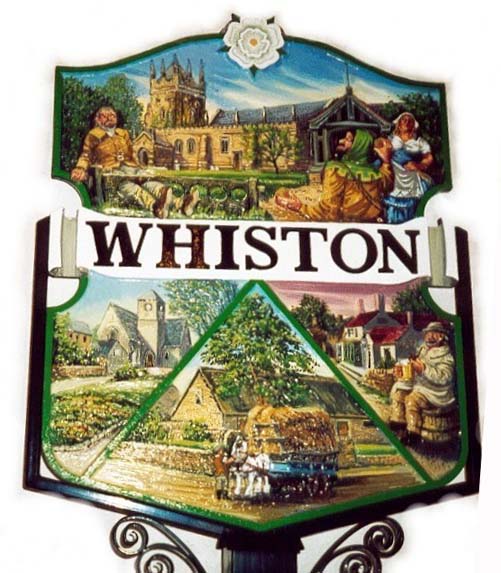Manor Houses
Great Houses of Whiston
Even as a small country village, Whiston contained many houses of great importance and stature:
|
Howarth Hall was perhaps the largest house in the area and was situated close to the boundary with Brinsworth. It was built in C.17; the earliest owners were called Laughton. Later the Westby family lived there. By early C.19 ownership began to change frequently and it was even used as a small boarding school for a time - by the C.20 it was often tenanted. The last family to live there were the Mountains and the hall was demolished in 1965 to enable the building of the Rotherway link road to the M1. |
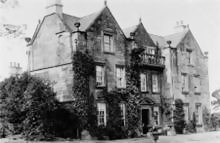
|
Whiston Hall Farm is perhaps the most significant property actually in the village itself. Some aspects of this date back to C.15 and at one time part of the farm included the historic Manorial Barn. The Hall was part of the purchase - by the Sitwells in 1823 - of the Lordship of the Manor of Whiston. It was leased to a number of farmers over the years, the most recent ones being the Unwins and the Clays. Farming has now ceased and the buildings, which have since been extended, are now an Old People's Home. |
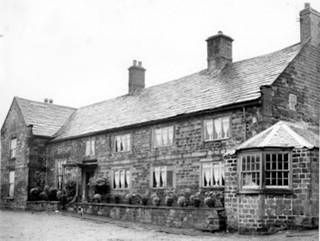
|
Guilthwaite Hall Farm was the home of Robert Sanderson, the Bishop of Lincoln in 1660. He was a confidant of King Charles and George Westby, and founded the treatment using water from the mineral spring at Spa House Farm, Treeton, a few years later. It is now a converted multi-residential property. |
|
|
For many years a part of Moorgate was included in the village boundary and towards the end of 19th Century, a number of large homes were built there to house some of the more important citizens of Rotherham.
|
|
|
Oakwood Hall, one of these was built for James Yates of Yates Haywood stovegrate manufacturers in 1856. Its role as a private house did not last very long and by 1916 it had been converted into a hospital. Today it is a Grade II listed building and stands in the grounds of Rotherham District General Hospital - which was built in front of it in circa 1980. However, due to high operating costs, it is no longer used by the NHS (although it is still owned by it). Consequently, Oakwood Hall has stood empty since the beginning of December 2012.
|
|
|
Red House. Between 1878 and 1880 Thomas Badger built Red House for himself; Lane End House for C.E. Rhodes (who was married to Badger's sister) and Sitwell House for Frederick P. Rhodes and his family - the brother to C.E. and partner to Badger in his firm of solicitors. In 1882 Badger was forced to flee the country leaving his business in financial confusion and with heavy liabilities. Mr. William H. Micklethwait bought Red House and its contents and lived there from 1882 to 1925; with his widow remaining in residence until her death in 1932. The Micklethwaits owned the Clough Works in Masborough which was a well known stove grate making business. |
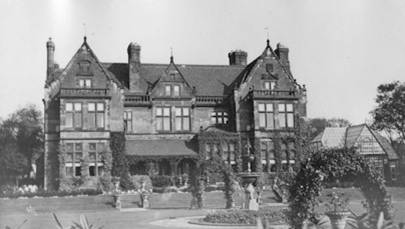
|
Sitwell House too had to be sold by auction in October 1882. The purchaser, George Shaw, ran the Holmes Pottery - known as George Shaw and Sons Ltd. Mr. Shaw died in 1892 and his widow continued to live in the house along with her two sons and four daughters. It fell vacant in 1935 when Mrs Shaw died. Both houses stood empty for some years. Some of the land was sold off for housing - especially that of Sitwell House. During WW2 Red House was occupied by the National Fire Service and Sitwell House by members of the Royal Signals Regiment. After the war the two houses were bought by United Steels to be developed as their research centre; both are now owned by TATA steel and include a conference centre. Together they form part of Swinden Labs Technology Centre. |
|
Lane End House. Located between Spinneyfield and Swinden Labs, Lane End House was owned by Charles Rhodes, a mining engineer and colliery manager, who remained here until his death. This was the last major house to remain in private ownership but has now been demolished and replaced by modern housing. |
|
Whiston Grange was built for Frederick P. Rhodes, who was in residence by 1901. It remained as a house for many years but was later used as a control center during WW2. After this various companies used it until it was demolished in 1971 and new housing now covers the site. |
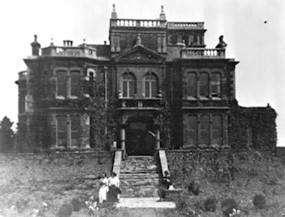
|
The Great Houses of Whiston would have been very desirable in their day and what you see here is just an overview of these opulent, elaborate and fascinating properities. The Society has researched them extensively so if you like any further details then do not hesitate to contact us.
